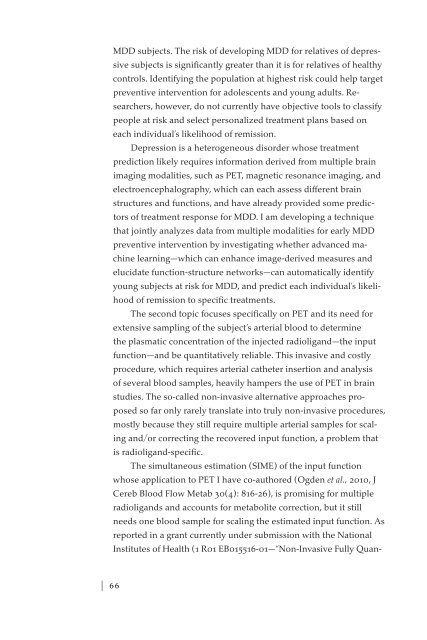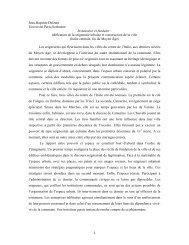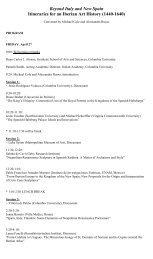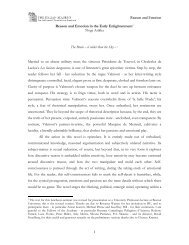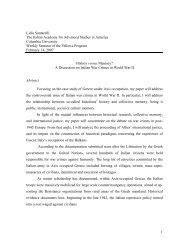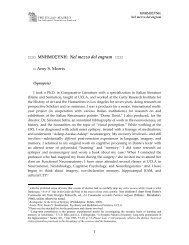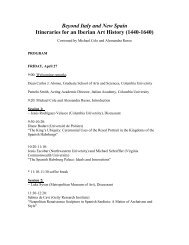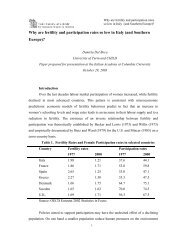2011-2012 - The Italian Academy - Columbia University
2011-2012 - The Italian Academy - Columbia University
2011-2012 - The Italian Academy - Columbia University
You also want an ePaper? Increase the reach of your titles
YUMPU automatically turns print PDFs into web optimized ePapers that Google loves.
MDD subjects. <strong>The</strong> risk of developing MDD for relatives of depressive<br />
subjects is significantly greater than it is for relatives of healthy<br />
controls. Identifying the population at highest risk could help target<br />
preventive intervention for adolescents and young adults. Researchers,<br />
however, do not currently have objective tools to classify<br />
people at risk and select personalized treatment plans based on<br />
each individual’s likelihood of remission.<br />
Depression is a heterogeneous disorder whose treatment<br />
prediction likely requires information derived from multiple brain<br />
imaging modalities, such as PET, magnetic resonance imaging, and<br />
electroencephalography, which can each assess different brain<br />
structures and functions, and have already provided some predictors<br />
of treatment response for MDD. I am developing a technique<br />
that jointly analyzes data from multiple modalities for early MDD<br />
preventive intervention by investigating whether advanced machine<br />
learning—which can enhance image-derived measures and<br />
elucidate function-structure networks—can automatically identify<br />
young subjects at risk for MDD, and predict each individual’s likelihood<br />
of remission to specific treatments.<br />
<strong>The</strong> second topic focuses specifically on PET and its need for<br />
extensive sampling of the subject’s arterial blood to determine<br />
the plasmatic concentration of the injected radioligand—the input<br />
function—and be quantitatively reliable. This invasive and costly<br />
procedure, which requires arterial catheter insertion and analysis<br />
of several blood samples, heavily hampers the use of PET in brain<br />
studies. <strong>The</strong> so-called non-invasive alternative approaches proposed<br />
so far only rarely translate into truly non-invasive procedures,<br />
mostly because they still require multiple arterial samples for scaling<br />
and/or correcting the recovered input function, a problem that<br />
is radioligand-specific.<br />
<strong>The</strong> simultaneous estimation (SIME) of the input function<br />
whose application to PET I have co-authored (Ogden et al., 2010, J<br />
Cereb Blood Flow Metab 30(4): 816-26), is promising for multiple<br />
radioligands and accounts for metabolite correction, but it still<br />
needs one blood sample for scaling the estimated input function. As<br />
reported in a grant currently under submission with the National<br />
Institutes of Health (1 R01 EB015516-01—“Non-Invasive Fully Quan-<br />
| 66


